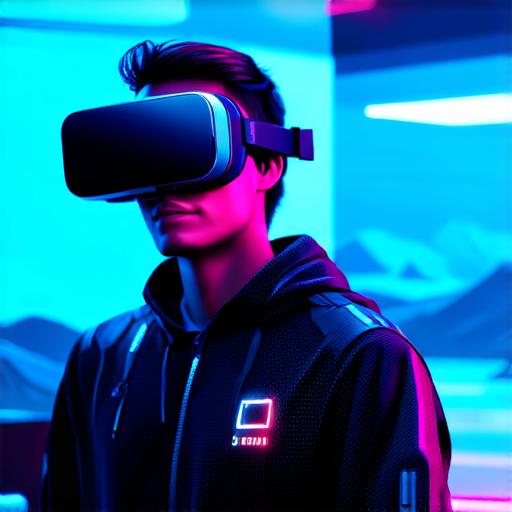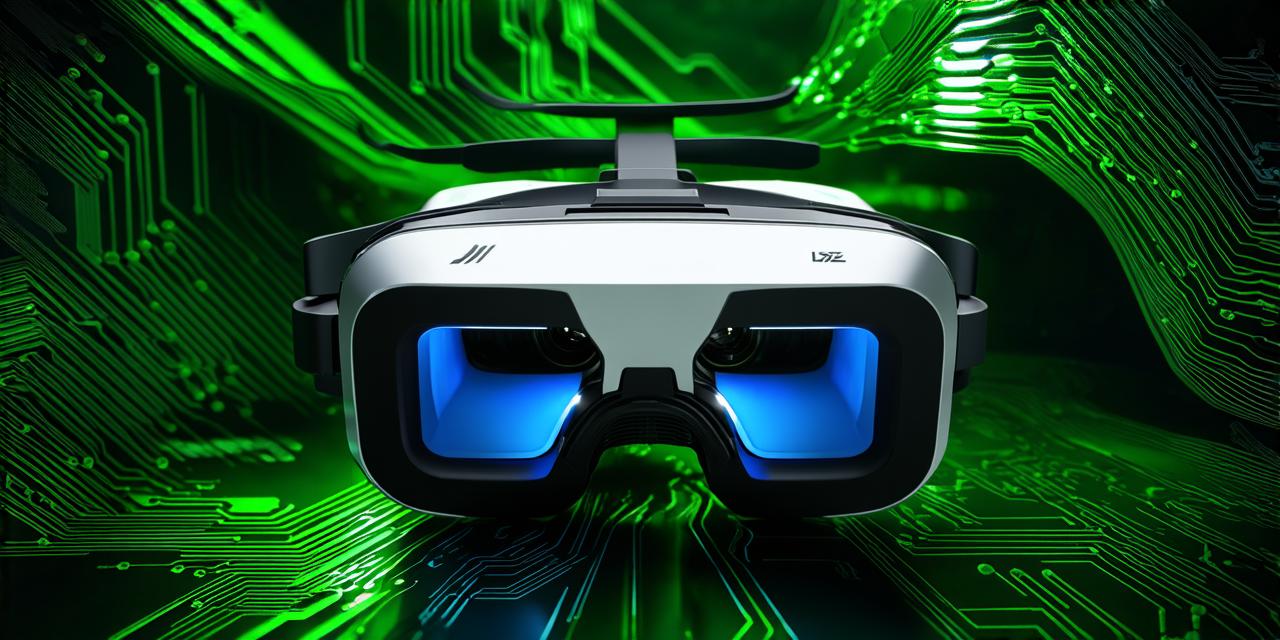
The Basics of Virtual Reality
Virtual reality is a computer-generated simulation that creates an artificial environment that can be experienced as if it were real. VR devices typically consist of a headset, sensors, and controllers, which track the user’s movements and translate them into a virtual world. The most common type of VR headset is the Oculus Rift, but there are many other options available, including the HTC Vive, PlayStation VR, and Samsung Gear VR.
Virtual reality can be used in various applications, such as gaming, education, training, and healthcare. For example, gamers can use VR to experience immersive video games that transport them into a digital world, while medical professionals can use VR simulations to practice surgeries or train for emergency procedures.
In addition, VR can be used in the fields of architecture, engineering, and design to create interactive 3D models that allow users to explore and manipulate virtual objects.
The Advantages of Virtual Reality
Virtual reality has several advantages that make it an attractive technology for various industries. One of the main benefits of VR is its ability to provide a highly immersive experience, which can enhance user engagement and motivation. By creating a virtual world that simulates real-world environments or situations, users can gain a deeper understanding of complex concepts or procedures without leaving their physical surroundings.
Another advantage of VR is its ability to provide a safe and controlled environment for training and simulation. For example, military personnel can use VR simulations to practice combat scenarios in a risk-free environment, while pilots can use VR simulations to hone their flying skills without putting themselves or others at risk.
In addition, VR can be used to create realistic product prototypes or test designs before they are produced, which can save time and resources.
The Latest Trends in Virtual Reality
Virtual reality is a rapidly evolving technology, with new innovations and trends emerging all the time. One of the latest trends in VR is the development of wireless headsets, which eliminate the need for cables or wires that can be cumbersome and restrict movement. Another trend is the use of haptic feedback, which allows users to feel physical sensations within the virtual world, such as vibrations or resistance from objects they interact with.
In addition, there has been a growing interest in the use of VR for social and collaborative experiences. For example, VR can be used to create shared virtual spaces where people can interact with each other in real-time, even if they are located in different parts of the world. This technology has the potential to revolutionize the way we communicate and collaborate, making it easier for people to work together on projects and ideas regardless of their location.
Case Studies: How Virtual Reality is Being Used in Various Industries
Virtual reality is being used in a variety of industries, including gaming, education, training, and healthcare. Here are some examples of how VR is being used in these fields:
- Gaming: One of the most well-known applications of virtual reality is in gaming. Virtual reality games allow players to experience immersive environments and interact with virtual objects in a way that was previously impossible. For example, players can use their hands to grab and throw objects or engage in hand-to-hand combat in a virtual world.
- Education: Virtual reality can be used in education to create interactive learning experiences that engage students and enhance their understanding of complex concepts. For example, VR simulations can be used to teach science subjects such as biology, physics, and chemistry by allowing students to explore virtual representations of these subjects in a safe and controlled environment.
- Training: Virtual reality can be used for training purposes in a variety of industries, including healthcare, military, and aviation. For example, medical professionals can use VR simulations to practice surgeries or emergency procedures, while military personnel can use VR simulations to hone their combat skills in a risk-free environment. In addition, pilots can use VR simulations to practice flying skills without putting themselves or others at risk.
- Healthcare: Virtual reality has the potential to revolutionize healthcare by providing patients with immersive experiences that can help them cope with pain and anxiety. For example, VR can be used to create virtual environments that simulate natural settings such as beaches or forests, which can provide patients with a sense of calm and relaxation.
Frequently Asked Questions About Virtual Reality
Q: What is the difference between virtual reality and augmented reality?
A: Virtual reality creates an artificial environment that is experienced through specialized devices, while augmented reality enhances the real world by overlaying digital information onto it.
Q: Can virtual reality cause motion sickness?
A: Yes, some people may experience motion sickness when using VR devices, especially if they are not used to the immersive environment. However, this can be mitigated by adjusting the settings on the VR device and taking breaks as needed.
Q: What types of devices are available for virtual reality?
A: There are many different types of VR devices available, including headsets, sensors, controllers, and motion tracking systems. Some popular VR headsets include the Oculus Rift, HTC Vive, and PlayStation VR.
Q: What industries are using virtual reality?
A: Virtual reality is being used in a variety of industries, including gaming, education, training, healthcare, architecture, engineering, and design.
Conclusion
Virtual reality is a rapidly evolving technology that has the potential to transform many aspects of our lives, from gaming and entertainment to education and healthcare. As an AR developer, you may be wondering how VR can be incorporated into your field and what opportunities it presents for your field. By understanding the basics of virtual reality, its applications in various industries, and the latest trends and innovations in this exciting new technology, you can stay at the forefront of this rapidly evolving field and take advantage of the many opportunities it has to offer.




